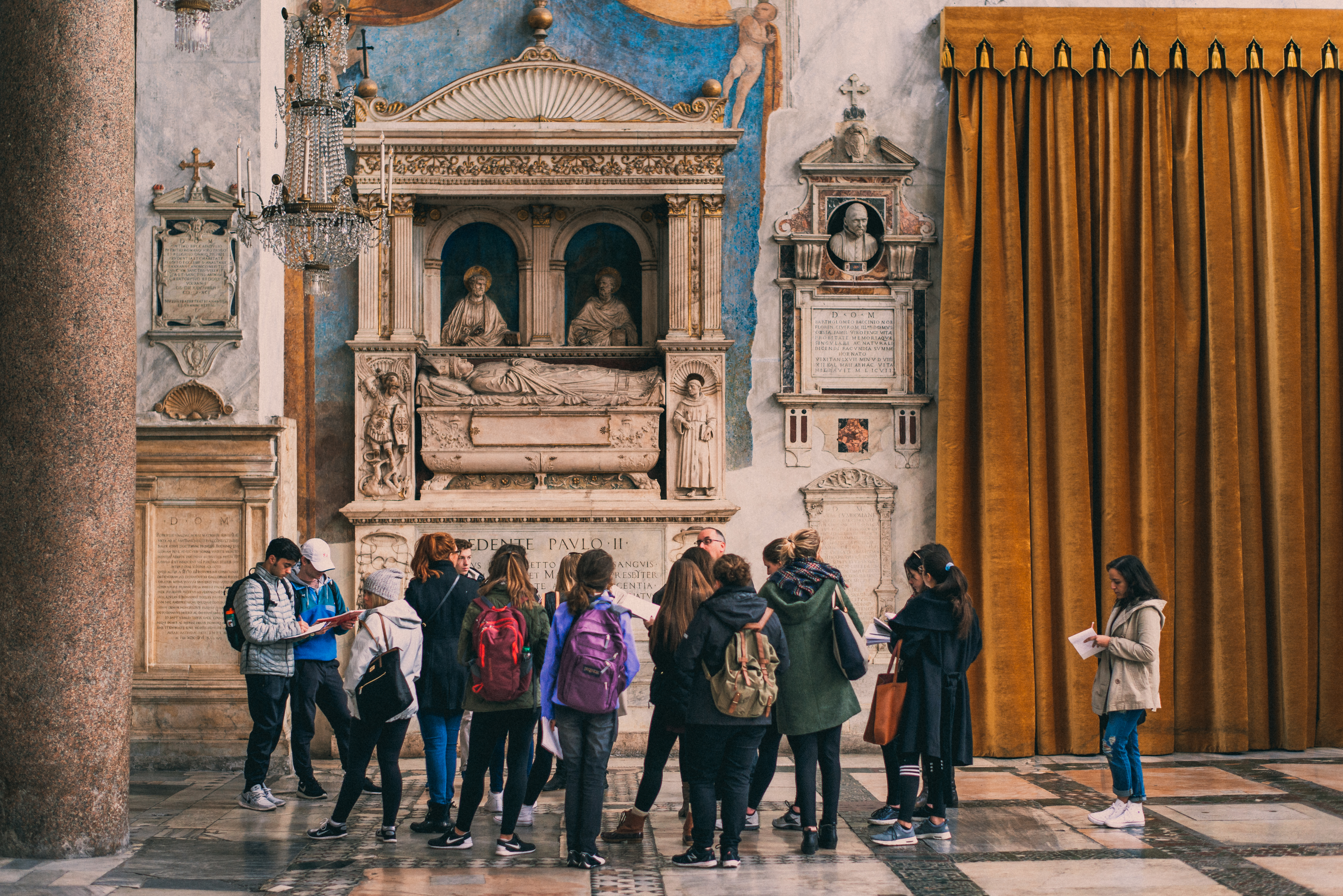

Among the many privileges of living in Rome is the opportunity to explore the remnants of the greatest city of the ancient world. At the height of its empire, Rome was one of the largest cities on the planet with elaborate architecture, infrastructure, and social systems. Today, the city remains a fascinating study destination for majors in Classical Studies, with its rich history preserved in monuments, museum collections, and archaeological findings.
Students in the Classical Studies program at John Cabot University are well-situated to complement their education with on-site experience of ancient art and material culture across Italy. Exploring the foundations of various aspects of western civilization—including social customs regarding love and relationships in ancient Rome—can provide insightful context for analyzing human relations in our contemporary world and critical thinking skills for addressing future challenges. Read on to learn more about social customs, love, and marriage in ancient times.
Social Customs of Ancient Rome
The city was the focal point of Roman life, providing a social hub for those looking to be part of a civilized community. Rome was a patriarchal society in its essence, where the male head of the household exercised special legal powers over all members of the family. As the Roman Empire expanded its conquest, slavery and class hierarchies were commonplace in society, with strict distinctions in legal rights depending on one’s status.
With such societal constrictions and inequalities, love often took a backseat to economic realities and inter-family relations. Girls stopped receiving formal education at about age eleven and were often arranged in marriage while still in their teenage years. Marriages were often arranged to gain political and economic favor between families. The more prominent her family, the stricter her choice of her husband.

Learn about Ancient societal practices during your classical studies in Rome
Take Classical Studies in Rome to Learn About Ancient Marriage Traditions
While Roman laws placed many restrictions on who was permitted to marry, marriage was simply a personal agreement between the bride and groom to live together. At a formal ceremony between the two families, gifts would be exchanged and the bride's father would arrange a dowry to be given to the groom's family.
If you pursue classical studies in Rome, you'll learn that many of our traditional wedding symbols come from ancient Rome. The wedding date would be carefully chosen, with June the most favored by the gods for matrimony. On the big day, the groom would lead a procession to the bride's family home. The bride would wear an orange-yellow dress and veil, be attended by a bridesmaid, and wear her engagement ring on the same finger we do today. An enormous feast and celebratory march to the couple's new home would follow the signing of the marriage contract. Not to mention, the groom would carry the bride over the threshold.

Many of our wedding symbols originated in ancient Rome
Love and Romance in the Time of Ancient Rome
Although marriage wasn't usually based on romantic attraction, love and affection would often grow over time between husband and wife. Love poetry flourished in ancient Rome, however, it was all written by men and mostly addressed extramarital affairs. In poems from around the first century A.D. men were so threatened by feelings of vulnerability that love was often referred to as a plague that caused the poet's tongue to swell up.
Those who study in Italy today can find evidence of ancient Rome's romantic side in archaeology and art throughout the city. The Temple of Roma and Amor, found among many other temples in the Roman Forum, was built in the 2nd century A.D. in honor of Venus - the goddess of love. More recently, the Villa Farnesina was built in the 16th century as a place for banker Agostino Chigi to host extravagant banquets and spend time with his mistress. It remains one of Rome's most beautiful examples of Renaissance architecture and features marvelous romantic frescoes by Raphael.
Are you interested in studying at an American university in Italy?
Explore John Cabot University in the heart of Rome!




